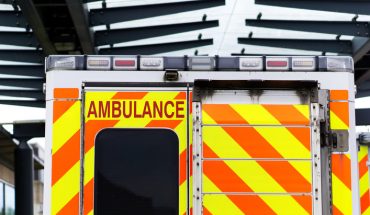On Monday 11th June 2018, Sir Norman Williams’ much-awaited report on gross negligence manslaughter in healthcare, commissioned by Jeremy Hunt in February 2018, was published.
To be found guilty of gross negligence manslaughter, which is a crime, a clinician must be found to have acted in a way that is “truly exceptionally bad”. It is a very high bar. The Crown Prosecution Service investigates about 30 cases a year, with an average of 1 prosecution a year. The profession’s fear of the crime, amplified by the highly publicised case of Bawa-Garba, is disproportionate to its minuscule incidence.
One of the report’s main recommendations can be summarised in a single word: education. The panel recommends education about the high threshold for prosecution in the form of an explanatory statement (forthcoming) to be shared and digested by the CPS, coroners, the police, medical experts, and others involved in the decision to go down the gross negligence manslaughter route.
The decision to prosecute, like the decision to sue doctors in negligence, is informed by the reports of medical experts. The experts comment on what the doctor did wrong, if anything, and then the degree of badness of the conduct: bad, very bad, exceptionally bad.
The decision to prosecute, like the decision to sue doctors in negligence, is informed by the reports of medical experts. The experts comment on what the doctor did wrong, if anything, and then the degree of badness of the conduct: bad, very bad, exceptionally bad.
The report stresses that experts should have experience in the relevant area (e.g., a paediatrician should comment on the actions of a paediatrician) and be in practice. Only then can the expert be sensitive to the realities of the doctor’s working environment. Finally, experts should be aware of the law and have sufficient training in delivering their expert opinion. Again, education.
Interestingly, the report recognises the important role of context in determining a doctor’s degree of blame and suggests that the Care Quality Commission could comment on the ‘broader system context’ of the provider or even conduct a parallel inspection to identify system and human factors in play at the time of the incident.
Following the Bawa-Garba case, many doctors were worried about disclosing potentially incriminating information in their reflective statements. The report notes that ‘where any evidence is material to a case, it is right that it should be considered’. Reflective material cannot be immune from disclosure. The CPS only went as far as saying that such material would be ‘unlikely’ to be used in criminal proceedings. Of course, it could be used by lawyers in the civil context to establish or negative negligence. It is doubtful whether this part of the report will give much solace to worried doctors, except the observation that reflective notes are ‘more likely to be used in support of an individual rather than against them’.
A controversial part of the report is the removal of the GMC’s right of appeal to the High Court if dissatisfied with a decision of the Medical Practitioners Tribunal Service (MPTS).
A controversial part of the report is the removal of the GMC’s right of appeal to the High Court if dissatisfied with a decision of the Medical Practitioners Tribunal Service (MPTS).
This right to appeal would be left solely to the Professional Standards Authority, which already oversees the other health professional regulators, such as the General Dental Council and the General Optical Council. It is plain that the panel struggled with this issue but it concluded ‘in the interest of patient safety’ that the GMC’s right of appeal should be removed. With respect, it is a curious rationale given that the report recognises just a page earlier that the GMC’s appeals were ‘not excessive’, had high success rates, and have arguably improved patient safety.
The removal of the GMC’s right of appeal should help re-establish doctors’ trust in their regulator but it is doubtful whether we, as members of the public, should feel reassured by this. Some will say the public has lost an effective layer of protection.
A worrying and unexplained statistic from the report is that 46% of doctors appearing before the MPTS in 2016/2017 were not legally represented. Given the very high stakes, this is a shocking figure that merits further analysis.
So will the implementation of the recommendations ‘dispel fear within the healthcare professions and improve patient safety’, as claimed in the report? Yes, if the forthcoming explanatory statement is widely circulated and reassures the medical profession that the likelihood of a criminal investigation for gross negligence manslaughter is vanishingly small. Yes, if all the professionals involved in the decision to bring charges against a doctor, from the police officers to the medical experts, are aware of the criteria and the high threshold for prosecution and apply them judiciously to the facts and context of the individual case.
Whatever the measures, there will always be some parts of the profession who believe that a well-meaning doctor should never be charged with the criminal offence of gross negligence manslaughter. That was not a view shared by the panel, who observed that healthcare professionals ‘could not be, or be seen to be, above the law and needed to be held to account where necessary.’ As the saying goes, with great power comes great responsibility.
Daniel Sokol is a barrister and medical ethicist. His forthcoming book ‘Tough Choices: Stories from the Front Line of Medical Ethics’ is available for pre-order on Amazon and other bookshops.
- COVID-19 Intensive Care Triage Protocol - 11th April 2020
- Remedial Ethics For Clinicians - 8th December 2019
- Doctors, Status and Social Media - 6th June 2019







